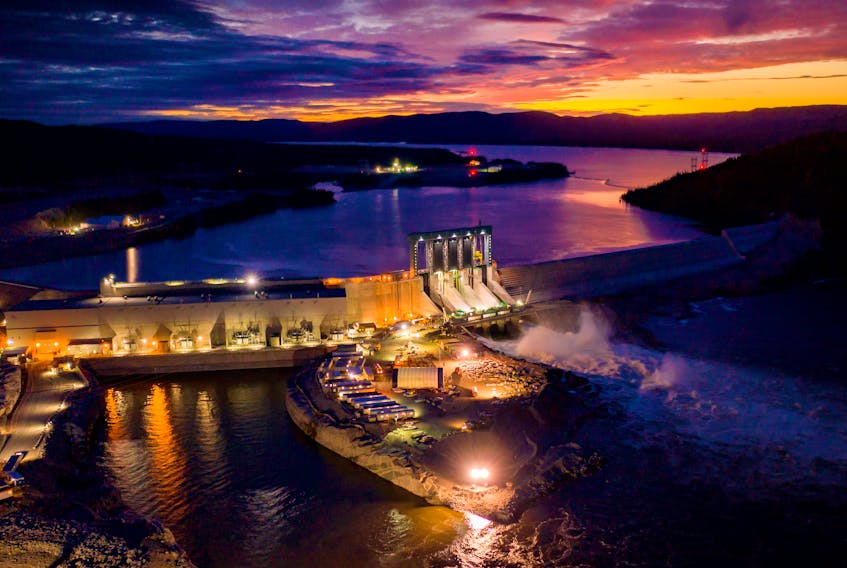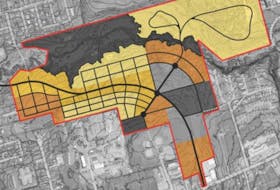Sometimes a good idea on paper doesn’t pan out as expected.
A prime example is the Muskrat Falls hydro project in Labrador, which has been plagued by delays and cost overruns.
When it was first devised, Nova Scotia Power was eager to sign on to acquire some of the renewable power Muskrat Falls would generate, thus helping the Nova Scotia electrical utility to meet its goal of 40 per cent renewable power by 2020.
In fact, Muskrat Falls power was slated to start flowing into Nova Scotia homes in June but that plan has been put off.
On Monday, Nalcor Energy, Newfoundland and Labrador’s government-owned company, indicated the cost of building Muskrat Falls had increased from $12.7 billion to $13.1 billion.
That price comes from an additional $75 million in capital construction and $300 million in financing costs for the project.
In announcing the increase, Nalcor CEO Stan Marshall indicated another increase is expected before the project is completed.
What about Nova Scotia rates?

Nova Scotia ratepayers can’t be blamed for wondering if their already high power rates will climb even higher as a result of Muskrat Falls’ problems.
Nova Scotia Power has a long-term deal to acquire 20 per cent of the energy generated at Muskrat Falls over a 35-year period, for about 20 per cent of the originally estimated cost of construction.
While Nova Scotia may receive some of the power earlier, the “Nova Scotia block” of power is not to be available until the third turbine at Muskrat Falls is completed.
Muskrat Falls power was supposed to start flowing through the submarine Maritime Link, connecting the island of Newfoundland to Nova Scotia, by June but work on the hydro project isn’t even close to being completed.
Nalcor projects Muskrat Falls will be generating full power by September 2021. Originally, it was to be operational by November this year.
The COVID-19 pandemic resulted in a four-month shutdown of the project, which contributed another $152 million in expenses for Nalcor.
The updated costs do not account for any future lawsuits or anything unforeseen resulting from the pandemic, according to the company.
Newfoundland and Labrador ratepayers are very concerned about the rising cost of the Muskrat Falls project and what it will mean for their electric bills.
If you think your increases are bad...
It isn’t certain that Nova Scotia ratepayers will be able to avoid covering some of the additional costs associated with Muskrat Falls, but Nova Scotia Power negotiated its deal with Nalcor before construction and at an established rate.
By coincidence, Nova Scotia Power Maritime Link has a request for an interim rate assessment before the Nova Scotia Utility and Review Board, which is expected to file its decision next month.
Halifax lawyer William Mahody says the cost overruns at Muskrat Falls may not affect Nova Scotia ratepayers as much as their cousins in Newfoundland and Labrador.
Mahody is the consumer advocate appointed by the Nova Scotia government to intervene on behalf of ratepayers in Maritime Link applications before the UARB. He told me in a brief interview Tuesday that the delay in bringing hydro power to Nova Scotia will mean Nova Scotia Power will have to acquire electricity to replace the power it was expecting from Muskrat Falls.
The cost of the replacement power is probably going to be passed on to electricity consumers in Nova Scotia.
In November 2019, the board approved a 2020 interim assessment of $144.5 million that can be collected by NSP Maritime Link, an Emera subsidiary, from Nova Scotia Power and its customers, the ratepayers, for costs related to construction of the Maritime Link.
The charge to NSP customers was $115 million in 2019 and $109 million in 2018.
The board directed in its 2019 decision that NSP hold back $10 million from what it charged ratepayers in previous interim assessments to ensure that ratepayers see a benefit from the Maritime Link. It also ordered the hold-back amount to be continued in 2020. The amount doesn’t actually go to ratepayers but is applied to Nova Scotia Power’s fuel costs.
The delay in bringing Muskrat Falls power to Nova Scotia will probably mean the $10-million hold-back will be applied to the interim assessment for 2021, as well.









